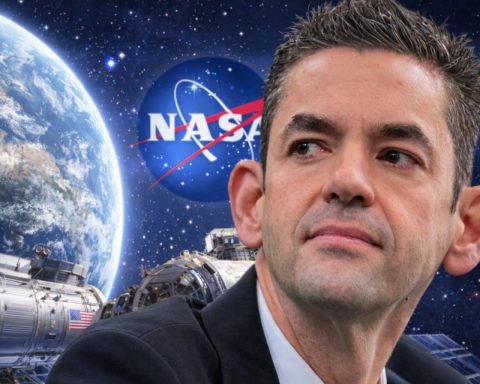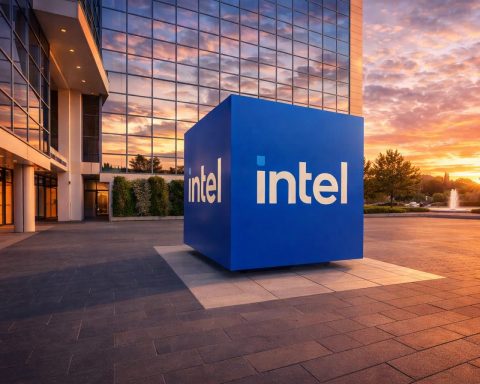Space and Astronomy
- Webb Spots Earliest Black Hole: Astronomers confirmed the most distant black hole ever observed, hidden in a galaxy nicknamed a “Little Red Dot” only 500 million years after the Big Bang [1]. Light from this supermassive black hole traveled 13.3 billion years to reach us [2]. Its mass—up to 300 million Suns—challenges theories of early galaxy formation [3]. “This adds to growing evidence that early black holes grew much faster than we thought possible,” said Steven Finkelstein, University of Texas astronomer and co-author on the discovery [4]. The team used JWST’s spectroscopic data to detect fast-moving gas signatures, pushing the limits of current technology [5] [6]. Their findings, published in Astrophysical Journal, offer an unprecedented glimpse of how cosmic structures formed in the dawn of the universe [7] [8].
- NASA-ISRO Satellite Unfurls Giant Radar: In a milestone for Earth observation, the NISAR satellite deployed its 39-foot (12 m) radar antenna reflector in orbit on August 15 [9] [10]. This large mesh dish “marks a significant milestone in the capabilities of the satellite,” said Karen St. Germain, director of NASA’s Earth Science Division [11]. NISAR, a joint mission between NASA and India’s ISRO launched July 30, will use dual-frequency radars to scan nearly the entire Earth every 6 days, tracking changes in ice sheets, earthquakes, volcanoes, forests and more with unprecedented detail [12] [13]. St. Germain noted the data “will have a major impact” on how communities prepare for natural disasters and maintain food security [14]. The successful unfurling (dubbed the “bloom”) of the umbrella-like antenna – the largest ever deployed by NASA – took just 37 minutes and enables NISAR to begin science operations by late fall [15] [16].
Medicine and Public Health
- First Drug for Deadly Brain Tumor: The U.S. FDA granted accelerated approval to Modeyso (dordaviprone), the first-ever drug to treat H3 K27M-mutant diffuse midline glioma, a typically fatal brain cancer in children and young adults [17] [18]. “It’s definitely an important step forward in a field where nothing has been approved,” said Dr. Patrick Wen, neuro-oncologist at Dana-Farber, noting that until now patients had only radiation treatment [19] [20]. Modeyso showed durable tumor responses in clinical trials [21], leading to approval for patients (age ≥1) with recurrent midline gliomas after standard therapy [22]. While Wen cautioned it benefits “only a subset of patients” and much work remains to improve outcomes, the breakthrough offers new hope against an aggressive cancer [23] [24].
- Cholera Crisis in Sudan Worsened by Climate: Sudan is grappling with its worst cholera outbreak in years, with nearly 100,000 suspected cases and 2,400+ deaths in the past year [25]. Ongoing civil war has displaced millions into overcrowded camps lacking clean water, while heavy rains and floods are contaminating supplies – creating ideal conditions for Vibrio cholerae bacteria [26] [27]. “When there’s social strife… and it causes breakdown of water and sanitation, you create the conditions for the bacterium to become abundant,” explained Rita Colwell, an environmental microbiologist and cholera expert [28]. She describes the outbreak as a “concatenation” of conflict and climate change, as warmer temperatures and flooding make cholera bacteria naturally more abundant, “just exacerbat[ing]” transmission in vulnerable populations [29] [30]. Aid groups like MSF (Doctors Without Borders) are urging urgent improvements in water infrastructure to stem the deadly outbreak [31] [32].
Climate and Environment
- Greenland Melt Supercharges Ocean Life: New research shows that meltwater from Greenland’s ice sheet is boosting marine food webs. As glaciers like Jakobshavn discharge torrents of freshwater, the lighter meltwater plumes drag nutrient-rich deep ocean water up to the surface [33] [34]. A NASA-backed study in Nature Communications: Earth & Environment used advanced simulations to model this process, finding summer phytoplankton blooms could increase by 15–40% from the nutrient surge [35] [36]. These tiny algae form the base of the Arctic ocean ecosystem and absorb CO₂, so understanding their fuel sources is key for climate science [37] [38]. “We were faced with this classic problem of trying to understand a system that is so remote and buried beneath ice,” said Dustin Carroll, oceanographer at NASA/JPL, “We needed a gem of a computer model to help” unravel it [39]. The model revealed that glacial runoff acts like a natural pump, delivering iron and nitrates to surface waters and potentially bolstering fisheries – an unexpected side-effect of ice loss [40] [41]. However, Carroll notes this was “one key system” out of hundreds of Greenland glaciers, so the broader impacts on the Arctic ocean will take more study [42].
Physics and Chemistry
- New Carbon Allotrope Synthesized: Chemists at the University of Oxford have created a novel form of carbon – a ring of 48 carbon atoms – that is stable at room temperature [43] [44]. This molecule, cyclo[48]carbon, consists of carbon atoms bonded in an alternating single-triple pattern, and was cleverly stabilized by threading it through three larger macrocycles (a “[4]catenane” structure) [45] [46]. Pure carbon rings this large had only been observed in extreme conditions (gas phase or 10 K) until now [47]. Science magazine just published the breakthrough, which is only the second new molecular carbon allotrope discovered under ambient conditions (the first being buckyballs in 1990) [48] [49]. Lead author Dr. Yueze Gao called achieving a stable cyclocarbon at 20 °C “a fundamental step” that will let scientists study its reactivity and properties in ordinary labs [50]. Senior author Professor Harry Anderson, who began pursuing carbon catenanes in 2012, said, “This achievement marks the culmination of a long endeavour… based on the hope that they might be stable enough to study at room temperature” [51]. He added that reaching this point, after many doubts, is deeply satisfying – a landmark in synthetic chemistry [52] [53].
Artificial Intelligence and Robotics
- Humanoid Robots Compete in Olympics: Robots took the world stage in Beijing at the inaugural World Humanoid Robot Games, a three-day “Robo-Olympics” featuring bipedal bots in kickboxing, soccer, and track races [54] [55]. Some 280 teams from 16 countries sent humanoid robots to showcase advances in AI-driven agility and balance [56]. The event highlighted both progress and challenges in robotics. During a 1,500m race, one robot’s head fell off mid-run – “To keep the head balanced is the biggest challenge for us,” said Wang Ziyi, a student competitor from Beijing Union University, after a toppled droid’s roundhouse kick went awry [57]. Organizers pointed to China’s heavy investments in embodied AI: government funds of ¥10 billion and banks pledging ¥1 trillion to spur the sector [58]. Yet experts caution real-world deployment still lags. “The state of AI is nowhere near seeing humanoids operating out of uncontrolled environments,” noted Dr. Jonathan Aitken of the University of Sheffield [59]. While companies like Tesla and Boston Dynamics lead in humanoid design, China’s rising robotics firms (e.g. UBTech, Unitree) are cutting costs and pursuing new approaches [60]. The robot games underscore remarkable strides in robotics – and the remaining gaps between flashy demos and everyday utility.
Sources: NASA, University of Texas at Austin, University of Oxford, CURE (Cancer Updates), Scientific American, NASA JPL, The News International [61] [62] [63] [64] [65] [66] [67].
References
1. scitechdaily.com, 2. scitechdaily.com, 3. scitechdaily.com, 4. scitechdaily.com, 5. scitechdaily.com, 6. scitechdaily.com, 7. scitechdaily.com, 8. scitechdaily.com, 9. science.nasa.gov, 10. science.nasa.gov, 11. science.nasa.gov, 12. science.nasa.gov, 13. science.nasa.gov, 14. science.nasa.gov, 15. science.nasa.gov, 16. science.nasa.gov, 17. www.curetoday.com, 18. www.curetoday.com, 19. www.curetoday.com, 20. www.curetoday.com, 21. www.curetoday.com, 22. www.curetoday.com, 23. www.curetoday.com, 24. www.curetoday.com, 25. www.scientificamerican.com, 26. www.scientificamerican.com, 27. www.scientificamerican.com, 28. www.scientificamerican.com, 29. www.scientificamerican.com, 30. www.scientificamerican.com, 31. www.scientificamerican.com, 32. www.scientificamerican.com, 33. scitechdaily.com, 34. scitechdaily.com, 35. scitechdaily.com, 36. scitechdaily.com, 37. scitechdaily.com, 38. scitechdaily.com, 39. scitechdaily.com, 40. scitechdaily.com, 41. scitechdaily.com, 42. scitechdaily.com, 43. www.chem.ox.ac.uk, 44. www.chem.ox.ac.uk, 45. www.chem.ox.ac.uk, 46. www.chem.ox.ac.uk, 47. www.chem.ox.ac.uk, 48. www.chem.ox.ac.uk, 49. www.chem.ox.ac.uk, 50. www.chem.ox.ac.uk, 51. www.chem.ox.ac.uk, 52. www.chem.ox.ac.uk, 53. www.chem.ox.ac.uk, 54. www.thenews.com.pk, 55. www.theguardian.com, 56. www.theguardian.com, 57. www.thenews.com.pk, 58. www.thenews.com.pk, 59. www.thenews.com.pk, 60. www.thenews.com.pk, 61. science.nasa.gov, 62. scitechdaily.com, 63. www.chem.ox.ac.uk, 64. www.curetoday.com, 65. www.scientificamerican.com, 66. scitechdaily.com, 67. www.thenews.com.pk










